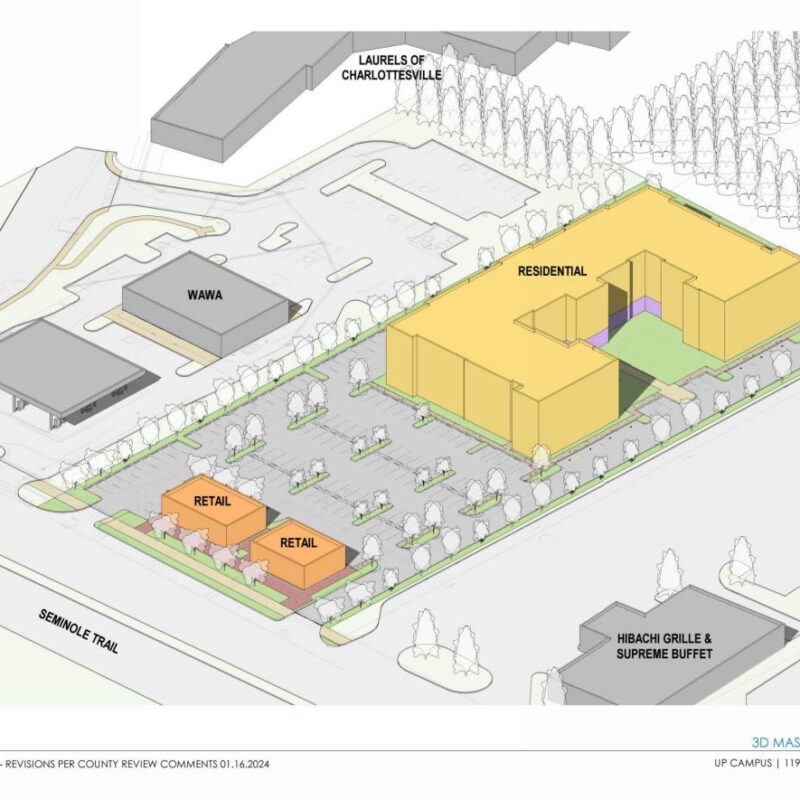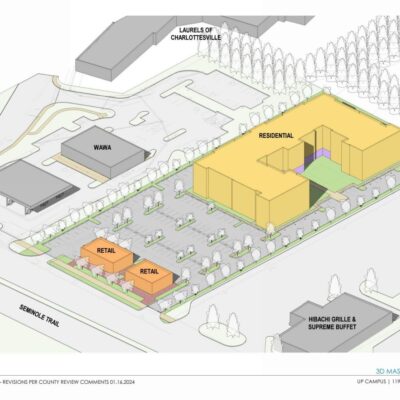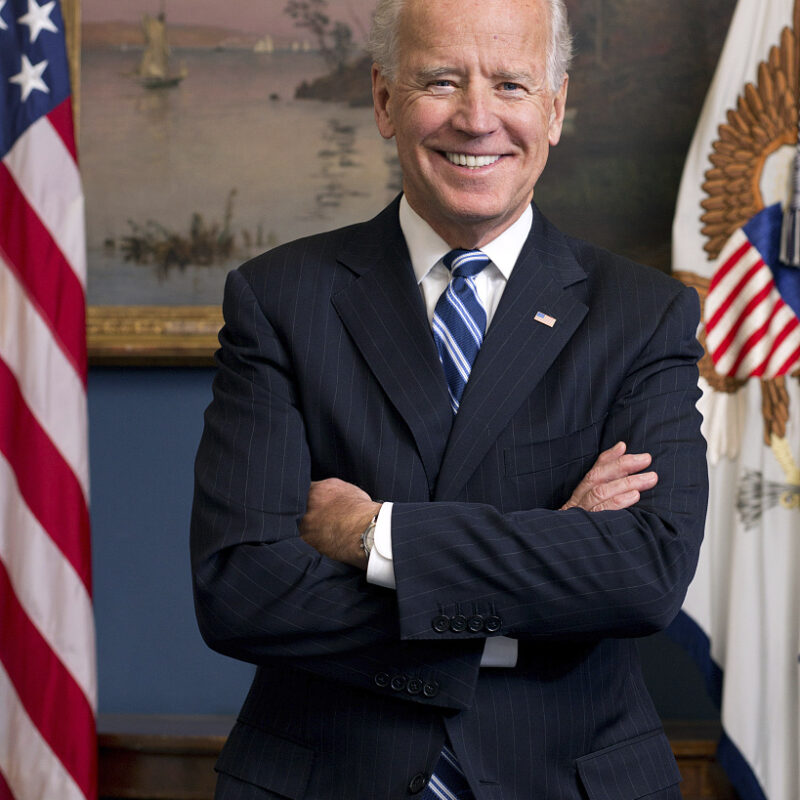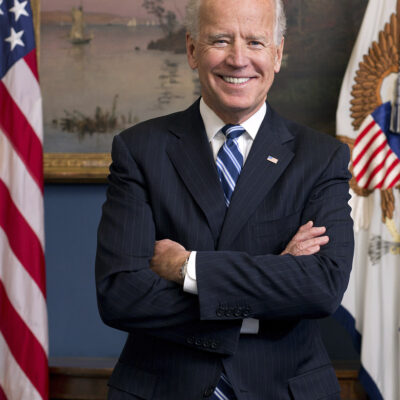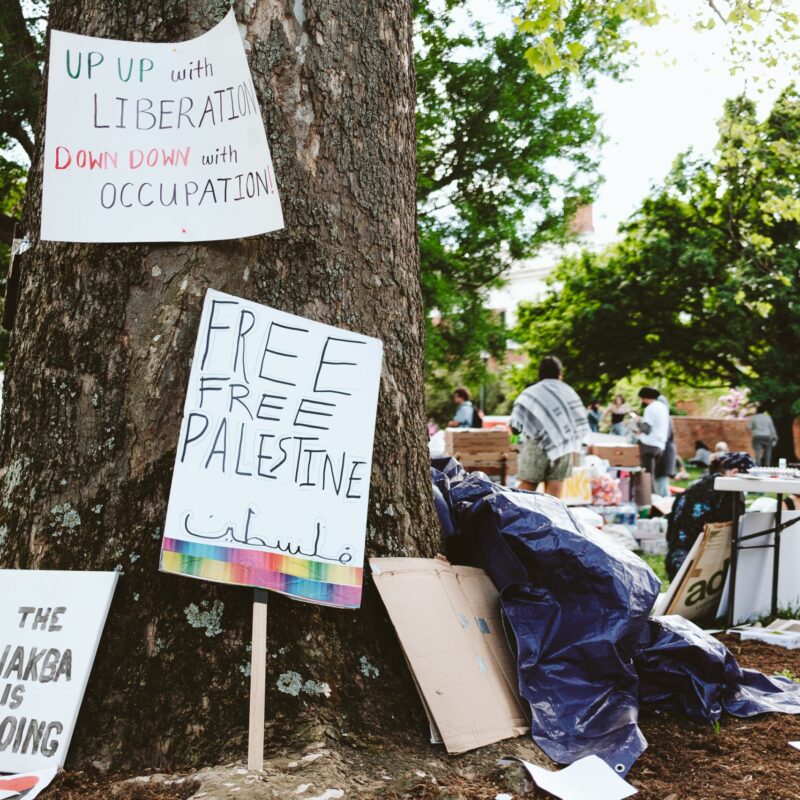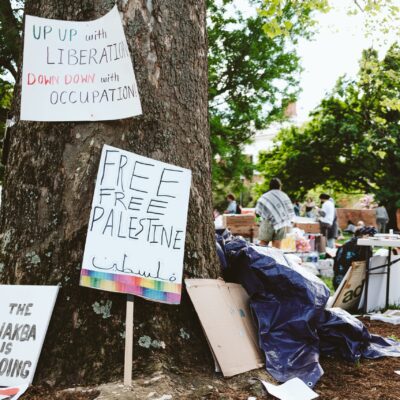BY Lisa Provence and Samantha Baars
Last Friday evening, almost 16 months after white supremacists invaded our town, many of the same counterprotesters who were there on August 12, 2017, were once again gathered on Fourth Street.
It was the spot where James Alex Fields, Jr., a self-proclaimed neo-Nazi from Maumee, Ohio, had rammed his Dodge Challenger into a crowd, killing Heather Heyer and wounding dozens of others. But on December 7, the mood was triumphant, as local activists and survivors of the car attack marched down Fourth Street chanting, “Whose streets? Our streets!”
Fields, 21, had just been convicted of first-degree murder as well as nine other charges that could leave him looking at six life sentences.
Rosia Parker was one of those on Fourth Street after the verdict, and to describe the sensation, she recalled what witnesses during the trial had said about the August 12 crowd that marched down Water Street and turned onto Fourth after the Unite the Right rally had been declared an unlawful assembly.
“It was celebratory,” says Parker. “We took the feeling back. It was a sense of urgent release. It was like birth was given to justice.”
Star Peterson, whose right leg was run over twice on August 12, and who will undergo her sixth surgery for her injuries next year, was pushed down Fourth Street in her wheelchair.
“I’m always going out of my way to avoid driving anywhere near Fourth Street,” she says. “So to go there on purpose with this group of people who love me and who are rejoicing with me was healing.”
A jury of seven women and five men deliberated a little more than seven hours before finding Fields guilty on all 10 counts, including five charges of aggravated malicious wounding, three of malicious wounding, and one count of felony hit and run.
The decision came on the 10th day of the trial. Defense attorneys John Hill and former Albemarle commonwealth’s attorney Denise Lunsford did not dispute that Fields was the driver of the car, but they did argue that he rammed into the crowd out of fear he was being attacked—an argument the jury apparently believed was unsupported by witness testimony and evidence.
On December 11, they recommended Fields receive a life sentence plus 419 years.

James Fields drove alone from Ohio to the Unite the Right rally and hung with members of Vanguard America before slamming his car into a crowd of citizens, most of them local residents. Photo: Eze Amos
Waiting for the verdict
Throughout the two-week trial, Peterson said she’d been studying the jurors’ faces, and she worried they’d hand down an unfavorable decision.
“Fear isn’t always logical,” she says.
And fear is an emotion she’s known all too well over the past 16 months. She mentions the last time she sat in the same courtroom as Fields, during his federal arraignment for 30 hate crimes in July. “Every time he looked around, I ducked. I was so afraid of him.”
And because she felt the same fear entering the Charlottesville Circuit courtroom on the first day of jury selection, Peterson says, “It felt good to be able to look him in the eye and give him a really dirty look as I was walking to the testifying box.”
Another victim, Bill Burke, drove from Ohio to be in Charlottesville for the trial. He’d come August 12 to support the community in the face of hate-filled ideologues massing here. This trip was “mostly for solidarity with the survivors,” he says.
Burke, one of dozens injured in the attack, was thrown aside with Heyer on top of him. He could count the compressions as she was given CPR, while someone told him to put his hand on the wound pouring blood from his head.
He’s still dealing with the brain injury. He walked with a cane for about a month, and had an injury from his left arm being crushed.
He also is getting divorced, which he attributes to the “constant anger I’ve been through since that day.”
Burke was an activist before 2017, but now, he says, “I have no fears to fight for racial equality. It showed me how much we have to do.”
As he waited for the jury to reach a verdict, he wondered why it was taking so long, especially when Assistant Commonwealth Attorney Nina Antony “laid it out so clearly.” Her case, he said, was “perfect.”
Burke was not one of the eight victims for whom Fields was convicted on the malicious and aggravated malicious wounding charges. “Nina said she didn’t want to muddy the waters with too much evidence,” he explains.
Sitting in the courtroom and seeing Fields was difficult. “It was hard not to be able to say anything to him,” says Burke. “I was told I was staring at him too intently.”
And though Courtney Commander, who was with her friend Heyer August 12, was also not a witness in this case, she felt the weight of the trial just as heavily.
The prosecution showed videos of the attack that Commander and other victims had never seen before, she says.
“It was like reliving it all over again,” she says. “My body was literally shaking. I could physically feel myself almost about to get sick.”

Assistant Commonwealth’s Attorney Nina Antony and Charlottesville Commonwealth’s Attorney Joe Platania head to court during the second week of the James Fields trial.
The bell rings
The jury rings a bell to signal that a verdict has been reached, and that happened around 4:45pm Friday. Before the jury returned to the courtroom, Judge Rick Moore warned that he wanted no audible reaction in the case in which “emotions have run high.”
Fields’ mother sat on one side of the courtroom and Heyer’s mother, Susan Bro, was on the opposite side.
As the verdicts were read, Fields was as impassive as he had been for the entire trial.
“We all just hugged and hugged and hugged,” says Peterson of the survivors and their supporters. She and Commander described feeling relief.
“It definitely felt like some weight had been lifted off of our chests, and it sent a good message to other white supremacists and Nazis…that if you come here and do things like that, you will be punished to the worst extent,” says Commander.
Outside the courthouse, Al Bowie, one of those Fields injured, said, “This is the best I’ve felt in a year and a half.”
Several stood with their arms raised and chanted, “They will not replace us,” a retort to the white polo-shirted men who marched through the University of Virginia August 11, 2017, chanting “You will not replace us” and “Jews will not replace us.”
Activists paraded through downtown Charlottesville and Market Street Park—formerly Lee Park—the scene of the rally that seared into the nation’s memory its images of hate and violence against the backdrop of a statue of a Confederate general, whose threatened removal was ostensibly the reason for the rally.
Says Parker, “My feeling is this is the start of a healing process for the Charlottesville community. We’d begun to scar without healing from the inside.”
The trial
The high-profile case, which the defense had wanted moved to another venue, began November 26, and took an unprecedented—at least in Charlottesville—three days to select a jury. The prosecution called around two dozen witnesses, including victims and police officers, and entered more than 170 exhibits.
The defense began calling witnesses December 5, including a couple who came from the Richmond area to attend the Unite the Right rally and had been with Fields shortly before his car attack. They testified that he had seemed “calm” and “normal.”
A crash expert told the jury that Fields was going 28mph down Fourth Street and a digital forensic expert said he had searched directions for Maumee, Ohio, on his phone at 1:39pm—three minutes before he drove down Fourth Street.
Before the defense rested its case December 6, it called two more witnesses—one who was with Fields minutes before he hit the accelerator on Fourth Street, and one who has become a figure in alt-right conspiracy theories that Fields was threatened by a gun-toting man before crashing into the crowd.
That would be UNC professor and anti-racist Redneck Revolt militia member Dwayne Dixon, who was here August 12 with an AR-15 on a self-appointed mission to defend then-called Justice Park, on Fourth Street between High and Jefferson streets. He testified that he’d seen a gray muscle car drive around the park three times 30 minutes to an hour before Fields plowed into the crowd.
Dixon said he thought it was a cop and yelled, “Get the fuck out of here.”
But Detective Steve Young, a rebuttal witness for the prosecution, testified that geo-location information on Fields’ phone did not show him circling Justice Park. And other defense witnesses had testified that Fields was with them walking back from McIntire Park at that time.
Attorney Janice Redinger, who served as an advisor to Dixon, says the defense calling him as a witness was “the most shocking thing to me” because they had to know Dixon had no contact with Fields, and thus couldn’t have frightened him before he charged down Fourth Street.
Says Redinger, “Nina eviscerated that argument. And if it had been Fields’ car, it would have shown he’d driven by counterprotesters three times. It would show he was casing them.”
She adds, “I was perplexed the whole time what the defense’s theme was. It made no sense.”
Prosecutor Antony encouraged the jury to find Fields guilty on all 10 counts, which would mean they believe he acted with malice, and that his actions that day were premeditated and intentional.
“It’s not about what Mr. Fields did, it’s about what his intent was when he did it,” she said during her closing.
Narrating for a final time what happened in videos that the jurors had likely memorized over the past two weeks, Antony said Fields turned onto Fourth Street, where two cars and a group of activists were in front of him, and where nothing but empty road was behind him.
In the video from Red Pump Kitchen on the north side of the mall and Fourth, Fields can be seen stopping his Dodge Challenger in the middle of the mall for a minute and six seconds, and then reversing. He could have continued backing up to turn off of Fourth and back onto Market if that’s what he truly desired, she said, but instead he stopped, idled, and then “something change[d] for him.” That’s when he raced his car forward into the crowd.
Months before August 12, Fields had posted to Instagram an eerily similar image of a car plowing into a group of protesters.
“He seizes that opportunity to make his Instagram post a reality,” said Antony.
Though the defense’s witnesses testified that Fields was “calm and normal like everybody else” minutes before he sped into the group, Antony said it was in that moment of idling that his demeanor changed: As he sat there in his car, he began to show the same “hatred” he had previously displayed in text conversations with his mom, in which she asked him to be careful at the Unite the Right rally, and to which he replied in an “ominous and sinister” text, said Antony, “We’re not the [ones] who need to be careful”—accompanied by an image of Adolf Hitler.
“There’s not an iota of evidence that supports he was so fearful he had to plow down a crowd of people,” observes Redinger. “The commonwealth used that he was calm to show he was in control of his emotions” and didn’t snap.
Antony acknowledged that Fields was immediately apologetic to the police officers who took him into custody after two brief pursuits. “I didn’t want to hurt people, but I thought they were attacking me,” he said. “Even if they were attacking me, I still feel bad for them. They’re still people.”
And when he was taken into the interrogation room at the police department, he refused to answer any questions without a lawyer, but inquired about the status of those he’d hit with his car. A detective told him there had been multiple injuries and one death, and Fields immediately began hyperventilating. He sobbed and gasped for air for more than two minutes.
At the local jail, he told the magistrate he felt a “really weird” emotion when he saw the group of joyful demonstrators. “I didn’t know what to do,” he said.
“Self-serving statements,” said Antony. And she said to the jury, “You may just not believe him.”
The prosecutor argued that Fields showed his true colors in two recorded jailhouse conversations between him and his mom months later, in which—among other things—he said he was “not doing anything wrong and then I get mobbed by a violent group of terrorists for defending my person,” and “it doesn’t fucking matter” that Heyer died. He called her mother, Susan Bro, a “communist” and “the enemy.”
This case is about more than a hateful ideology, however.
“It’s about those bodies that he left strewn on the ground,” Antony said. “It’s about Heather.”

Thirty-two-year-old Heather Heyer died almost immediately when James Fields’ muscle car slammed into her. Contributed photo.
In the defense’s closing arguments, attorney Denise Lunsford noted the “crowd mentality” of the protesters and counterprotesters attending the Unite the Right rally.
“A lot of people were behaving badly that day,” she said. “That’s just about as simple as you can put it.”
Though numerous witnesses described the band of activists that Fields sped into as happy, cheerful, and celebratory, Lunsford told the jury, “The difference between a joyful crowd and a hostile mob is in the eye of the beholder.”
She reminded jurors that young people often make poor choices, and that the car-crashing meme and Hitler image on a text were inappropriate, but “not an expression of intent and not necessarily an expression of hate.”
Lunsford asked the jury to put themselves in Fields’ shoes. He was 20 years old at the time, overwhelmed by all that happened that day, and as indicated by the directions he had just typed into his GPS, he was just trying to go home to Maumee, Ohio. She knew he was headed home because he didn’t pack any extra clothes, he’d paid his rent, and signed up for classes at community college, she said.
Earlier that day, he’d been spattered with urine and had exchanged choice words with people he calls “antifa.” And when, he alleged, a crowd of them started rushing his car, he thought he was in danger.
Fields didn’t stop at the scene of the crime because his glasses had been knocked onto his floorboard and he couldn’t see whether he’d injured anyone, according to Lunsford. Without his glasses, he also couldn’t see police chasing him, she added.
But Antony noted that, even without his glasses, he backed up in a straight line, and then effortlessly dodged cars and made turns during the brief police pursuit.
A photo taken of the front of the Challenger as Fields reverses away from the crowd he just ran over has been admitted into evidence. His face is visible. He stares intently.
“That is not the face of someone who is scared,” said Antony. “That is the face of anger, of hatred. That is the face of malice.”
The defense team was “dealt a really bad hand,” says Redinger. The theory Lunsford presented “was implausible, given the magnitude of the evidence.”
Had the defense strategy undermined the idea that he’d acted maliciously, the jury could have dropped the charges to voluntary manslaughter and unlawful wounding, says Redinger. “It’s just that there was overwhelming evidence of malice.”
On December 10, the jury heard victim impact statements, and the following day they recommended a life sentence plus 419 years for Fields.
“Some days I can’t do anything but cry or sit and stare as the grief overtakes me,” said Bro during her final statement to the jury. She said Heyer’s death was like “an explosion,” and almost everyone in her family has attended grief counseling, “as the darkness has tried to swallow us whole.”
Bro said it was difficult to read her letter through her tears. “We are survivors, but we are much sadder survivors.”
After her daughter’s murder, Bro started the Heather Heyer Foundation to offer scholarships to students active in social justice and equality. She said she’s been invited to talk about hate in a variety of settings and she’s been interviewed on similar topics by people all over the world.
But Bro told the jury, “I would give every bit of that just to hold my daughter again.”
Fields still faces 30 federal hate crime charges, for which a trial date has not been set.
The decisive guilty verdict was a watershed moment for survivors—and for the city itself.
Peterson, after celebrating on Fourth Street following the verdict, says it sent a message to Fields that, “We’ve won. We’ve had a victory today and this street isn’t just going to be about pain and fear and horror anymore. This street is going to be about victory and about honoring Heather.”
The victims
Thirty-five people were injured in the car attack, but only eight were included in the charges that went to trial, to avoid bogging the jury down with an overwhelming amount of testimony and evidence.
Fields was charged with five counts of aggravated malicious wounding and three counts of malicious wounding. The element of malice and “the intent to maim, disfigure, disable or kill” are key in charges of malicious wounding in Virginia state code. It becomes aggravated malicious wounding when the injuries cause suffering of “permanent and significant physical impairment.”

Star Peterson celebrates victory after James Fields is convicted, returning to Fourth Street, which she has avoided since August 12. Photo: Eze Amos
Victims of aggravated malicious wounding
Thomas Baker
Baker, a conservation biologist who said he is not an activist but felt obligated to show up that day, was a lifelong athlete. That was before he took a direct hit from Fields’ car that left him with a broken left arm and torn ligament in his wrist, a concussion, and a hip that required major surgery that included four screws. “My life has been dramatically altered,” he said.
Brian Henderson
“I tried to put my arms up and fly like Superman,” the Charlottesville native and city social services manager said, recounting the moments when the Dodge Challenger bore down on him. He thought his left arm had been broken, “because it was turned all the way around.” Later he learned his bicep had separated from the bone and a nerve was nearly severed. He also suffered four broken ribs and had no toenails on one foot. He used to be able to lift weights and do 50 standing pushups. Now he can lift 10 pounds max.
Star Peterson
Fields ran over the local activist’s right leg on his way into the crowd, and backed over it again on his way out, but Peterson told the jury that all she really felt at the time were a couple of bumps. She has one vivid memory of the entire attack, and that was seeing Heather Heyer flying through the air and thinking, “that’s what someone’s eyes look like when they’re dead.” She also knows someone pulled her out of the street and held her neck in place to avoid paralysis. And as she lay there, she remembers pleading to see someone’s face. Five surgeries later—with another scheduled for next year—Peterson has had a metal bar, three metal plates, and approximately 18 screws drilled into her leg. When she’s not using her wheelchair, she usually carries a cane.
Lisa Q
This friend of Star Peterson”s was looking for a bathroom as the celebratory group turned onto Fourth Street. “I felt like I was in a tornado,” she testified. “The next thing I was aware of I was on top of a car.” Her left arm was broken, as were both legs and all the bones to her fingers. She has metal in her hand and now can’t make a fist.
Al Bowie
After the car plunged into the crowd, Bowie rushed to help those who’d been battered and made it about two feet away from Fields’ bumper when the reverse lights came on. The car knocked the activist into a parked truck, shattering Bowie’s pelvis into six pieces. A fragment of broken pelvis slashed the femoral artery, and Bowie was bleeding out while waiting for an ambulance. On the second day in the hospital, a metal bar called an external fixator was drilled through the lower half to hold Bowie’s pelvis in place. Bowie also suffered a fractured orbital socket, a broken tailbone, three broken vertebrae, multiple lacerations, and road rash. Because the pelvis healed diagonally, Bowie’s gait is permanently affected.

Marcus Martin shoved his fiancée, Marissa Blair, out of the way before he was hit by James Fields’ car. Photo: Eze Amos
Victims of malicious wounding
Aubtin Heydari
His memories after the unlawful assembly was declared at then-Emancipation Park are fuzzy. While he has no memory of the car attack, he remembered something being wrong and seeing blood. He awoke in the hospital with a gash on his head and a concussion. “I couldn’t remember anything more than six or eight minutes and kept asking, ‘What happened?’” He also had a severely fractured leg.
Marcus Martin
He shoved his fiancée out of the way before he was hit by Fields’ car, and subsequently was captured in the air in Ryan Kelly’s Pulitzer Prize-winning photo. His ankle and shin were broken, and took months to heal.
Alexis Morris
At the time of the attack, Morris thought she heard an explosion. She lost consciousness when she was hit, and when she came to, her leg was broken. It now houses permanent rods and pins.
Several survivors of the car attack haven’t been able to return to work, says Star Peterson. She’ll be home for many more months as she awaits a sixth surgery, which could happen anytime between April and July.
“It’s very scary not having any income coming in, especially for almost 16 months now,” Peterson says. Luckily, the Heal Charlottesville fund has been assisting her and other injured victims in ways such as paying rent, utility bills, and buying groceries.
“But they don’t have the money they need to last for as long as it’s going to take for the rest of us to get our surgeries,” she adds. “I’m asking people to celebrate this court victory and to show their love and support for survivors by donating to the Heal Fund.”
Most damning evidence
- Red Pump Kitchen video that shows Fields stopped on Fourth Street on the Downtown Mall for one minute and six seconds, before slowly backing up, then accelerating down Fourth.
- Ryan Kelly’s more than 70 photographs of the Dodge Challenger slamming into the crowd.
- The car crash memes Fields posted on Instagram that say, “You have the right to protest
but I’m late to work,” and, in particular, the private post on May 12, 2017, when he wrote, “When I see protesters blocking.” - The text Fields sent to his mother August 11, 2017, after she told him to be careful: “We’re not the [ones] who need to be careful—” with an image of Adolf Hitler attached.
- Witness Michael Webster and his girlfriend Melissa Elliott, who were going to lunch and both testified there was no one near Fields while he was on the mall before he floored it down Fourth Street.
